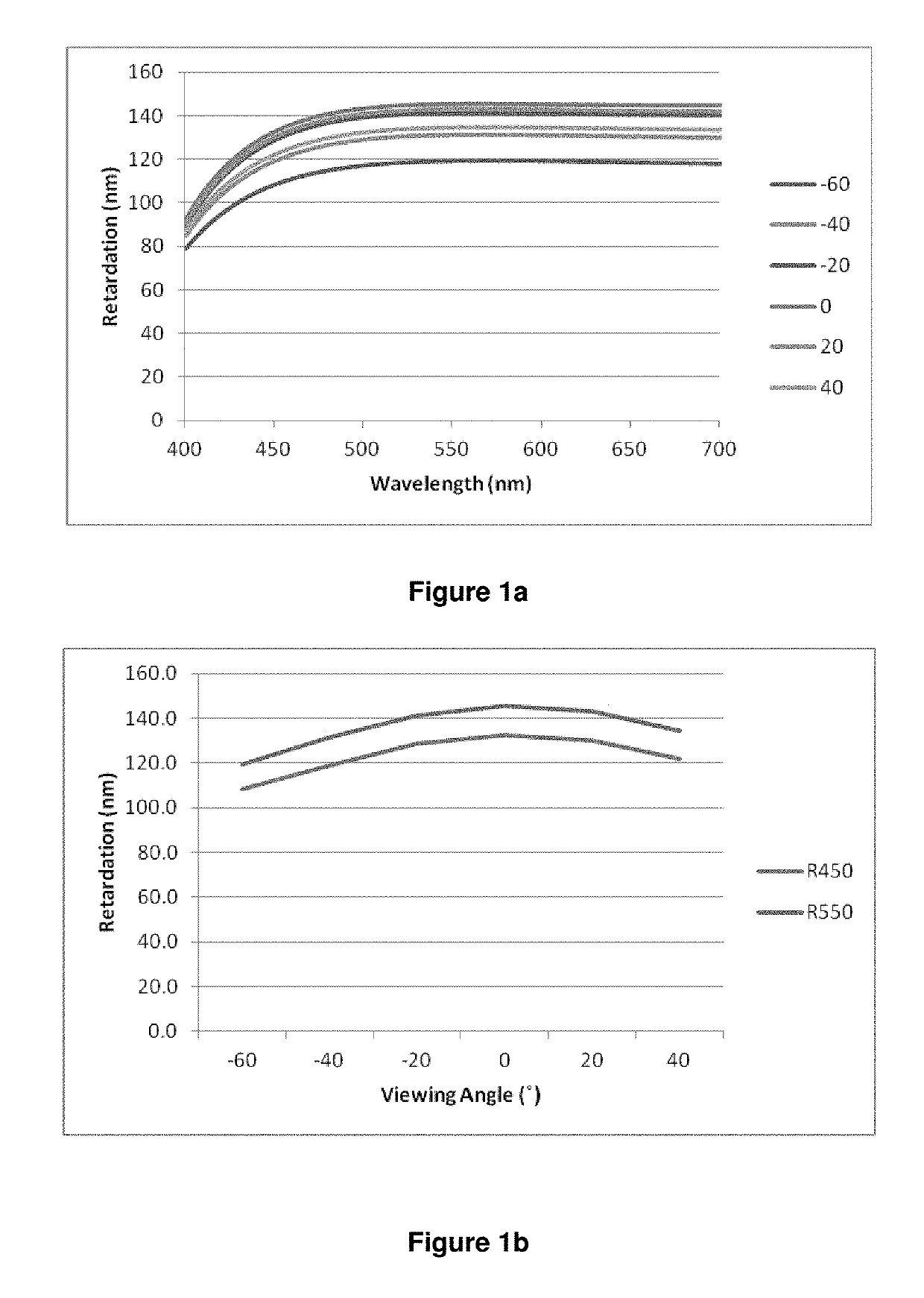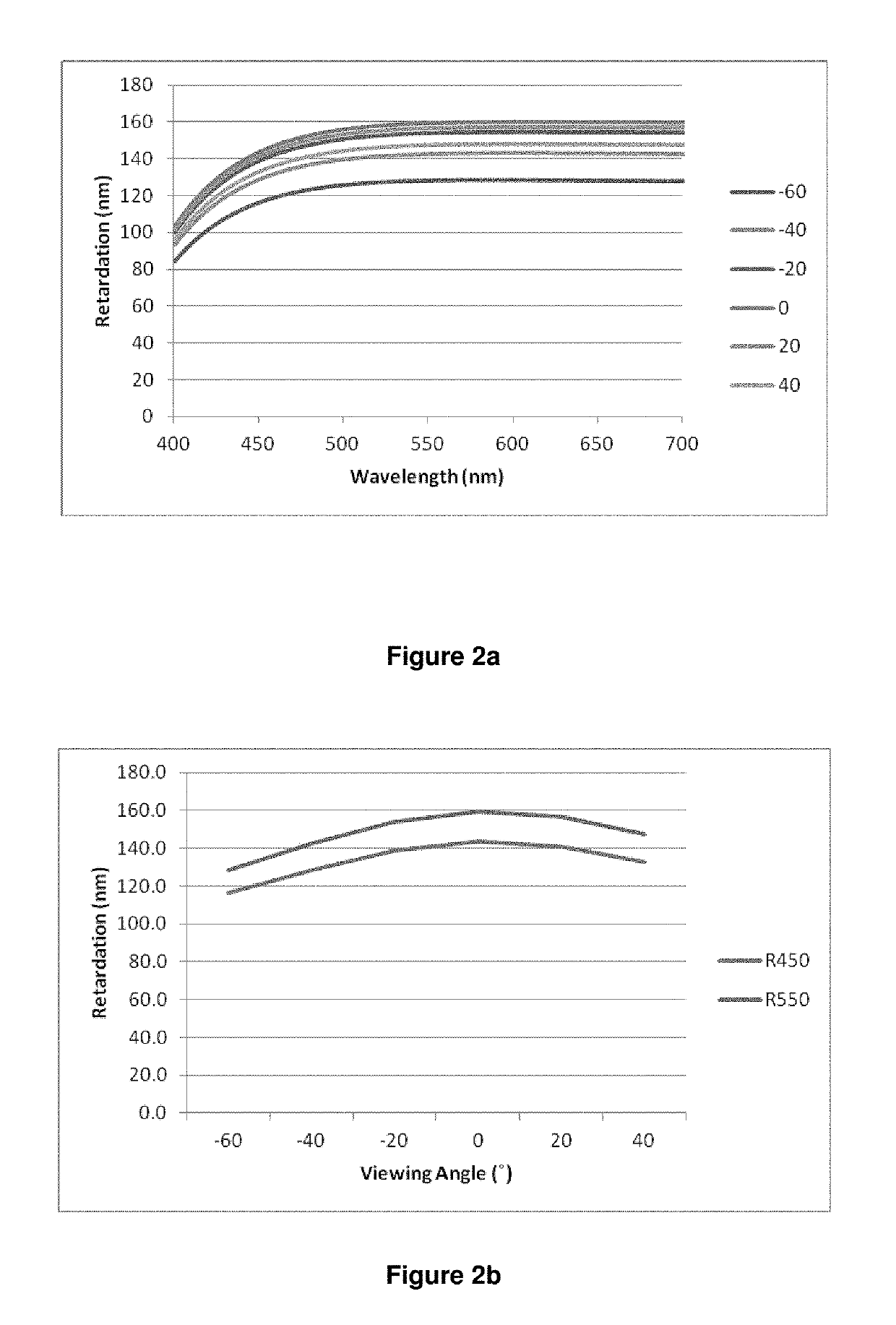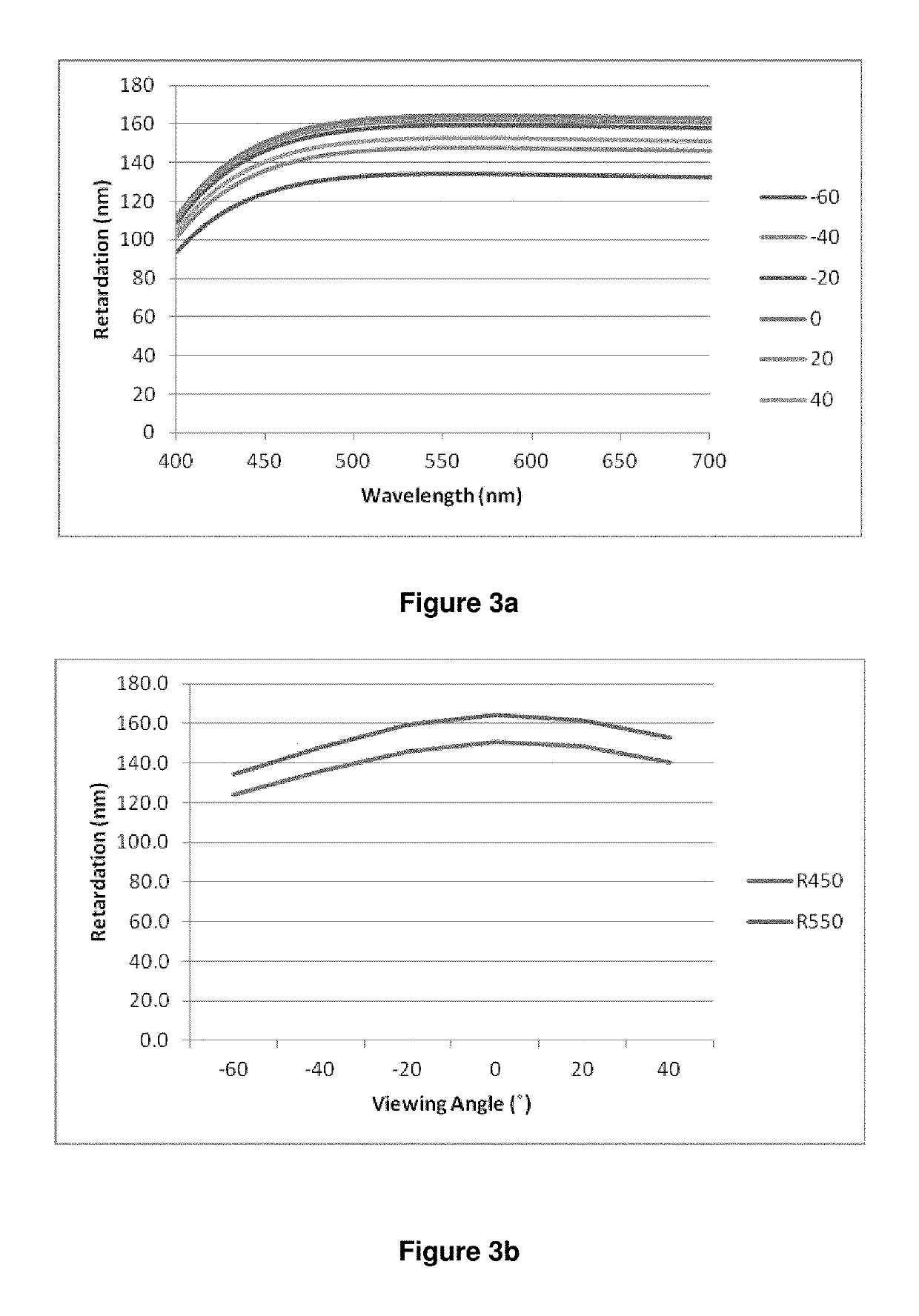Polymerisable LC medium and polymer film with negative optical dispersion
a technology of optical dispersion and polymer film, which is applied in the direction of optical elements, polarising elements, instruments, etc., can solve the problems of difficult alignment or formulation, negative dispersion compounds, and inconvenient mass production, so as to improve durability, reduce cost, and improve the effect of dispersion compounds
- Summary
- Abstract
- Description
- Claims
- Application Information
AI Technical Summary
Benefits of technology
Problems solved by technology
Method used
Image
Examples
example 1
[0229]The following mixture having a clearing point of 81° C. and a birefringence of 0.06 at 550 nm is formulated (in wt. %):
[0230]
Irgacure ® 3691.00Irganox ® 10760.12LC24216.66RM 137.63RM 230.00RM 413.59Zonyl FSO ® 1001.00
[0231]The mixture can be annealed at temperatures ranging from 80 to 51° C.
[0232]The retardation profile (retardation dispersion and retardation versus viewing angle at different wavelengths) as shown in FIGS. 2a and 2b is measured using an ellipsometer, and the thickness of 2.29 μm is measured using a surface profiler.
[0233]The retardation dispersion values at different angles of incidence are shown in Table 2 below.
[0234]
TABLE 2Angle (°)6040200−20−40R550131.2145.7157.9163.4160.6150.7R450 / R5500.9250.9200.9190.9180.9180.919
[0235]In order to test the durability of the polymer film, the film is exposed to a temperature of 80° C. for a time up to 169 h. Table 2.1 summarizes the result of the durability test
[0236]
TABLE 2.1Time at 80° C. [h]00.5124724169R(450) / R(550)0....
example 2
[0245]The following mixture having a clearing point of 76° C. and a birefringence of 0.06 at 550 nm is formulated (in wt. %):
[0246]
Irgacure ® 3691.00Irganox ® 10760.12LC24226.88RM 137.63RM 230.00RM 43.77TegoTwin ® 41000.60
[0247]The mixture can be annealed at temperatures ranging from 70 to 52° C.
[0248]The retardation profile (retardation dispersion and retardation versus viewing angle at different wavelengths) as shown in FIGS. 4a and 4b is measured using an ellipsometer and the thickness of 2.29 μm is measured using a surface profiler.
[0249]The retardation dispersion values at different angles of incidence are shown in Table 4 below.
[0250]
TABLE 4Angle (°)6040200−20−40R550109.0120.2129.8134.2132.2124.8R450 / R5500.9210.9170.9140.9140.9140.916
[0251]In order to test the durability of the polymer film, the film is exposed to a temperature of 80° C. for a time up to 260 h. Table 4.1 summarizes the result of the durability test
[0252]
TABLE 4.1Time at 80° C. [h]00.51252297260R(450) / R(550)0.9...
PUM
| Property | Measurement | Unit |
|---|---|---|
| wavelength | aaaaa | aaaaa |
| wavelength | aaaaa | aaaaa |
| wavelengths | aaaaa | aaaaa |
Abstract
Description
Claims
Application Information
 Login to View More
Login to View More - R&D
- Intellectual Property
- Life Sciences
- Materials
- Tech Scout
- Unparalleled Data Quality
- Higher Quality Content
- 60% Fewer Hallucinations
Browse by: Latest US Patents, China's latest patents, Technical Efficacy Thesaurus, Application Domain, Technology Topic, Popular Technical Reports.
© 2025 PatSnap. All rights reserved.Legal|Privacy policy|Modern Slavery Act Transparency Statement|Sitemap|About US| Contact US: help@patsnap.com



